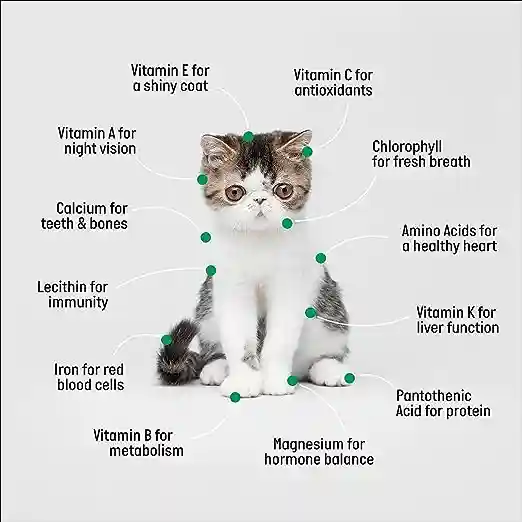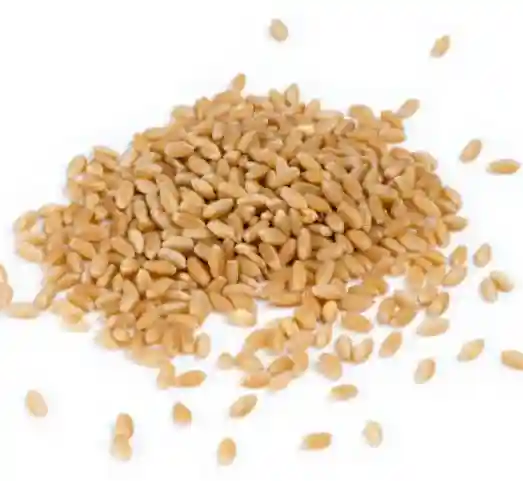Organic Cat grass, a type of nutrient-rich vegetation, is an essential addition to any cat owner’s toolkit. Not only does it provide numerous health benefits for your feline friends, but it also adds a touch of greenery to your living space. In this article, we will delve deep into the world of organic cat grass, exploring its advantages, different types, and how to grow it successfully.
Types of Organic Cat Grass

There are several varieties of cat grass to choose from, each with its unique characteristics. Understanding these types can help you select the best one for your furry friend.
Wheatgrass: Wheatgrass is perhaps the most popular choice when it comes to cat grass. It’s easy to grow and packed with nutrients. Cats love its long, tender blades.
Oat Grass: Oat grass is another excellent option. It’s mild in flavor and can be a great choice if your cat is a picky eater. Oat grass is also known for its quick growth, ensuring a fresh supply for your cat.
Barley Grass: Barley grass is nutrient-dense and provides your cat with essential vitamins and minerals. It has a sweet taste that many cats find appealing.
Key Characteristics of Cat Grass
Cat grass possesses the following key characteristics:
- Safe for Cats: Cat grass is carefully selected to ensure that it’s non-toxic and safe for cats to chew and ingest. This makes it a worry-free addition to your cat’s environment.
- Fast Growth: Cat grass is known for its rapid growth. Once planted, it usually sprouts within a few days and reaches a suitable height for your cat to enjoy in about a week.
- Tender Blades: The blades of cat grass are tender and easy for cats to chew. This makes it a delightful treat that even kittens and senior cats can enjoy without any difficulty.
- Nutrient-Rich: Cat grass is packed with essential nutrients, including vitamins, minerals, and chlorophyll. It’s like a natural dietary supplement for your cat.
- Natural Laxative: Consuming cat grass can have a mild laxative effect on cats. It can help them pass hairballs or other indigestible materials more easily.
Benefits of Cat Grass

Cat grass offers a variety of benefits for both cats and their owners:
- Digestive Aid: Cat grass aids in the digestion process by helping cats regurgitate indigestible matter, such as hairballs, which can be especially common in long-haired breeds.
- Nutritional Boost: It provides essential nutrients like vitamins and minerals, helping to supplement your cat’s diet.
- Stress Reduction: Chewing on cat grass can have a calming effect on cats, helping to reduce stress and anxiety.
- Dental Health: It can help keep your cat’s teeth clean by reducing plaque and tartar buildup.
- Entertainment: Cat grass serves as a source of mental and physical stimulation for cats, preventing boredom.
- Safe Indoor Option: For indoor cats, cat grass offers a safe alternative to outdoor grass, free from potential hazards like pesticides or toxic plants.
- Bonding: Caring for and tending to your cat’s cat grass can be a bonding experience between you and your pet.
Organic cat grass is a simple yet effective way to enhance your cat’s well-being. It’s an all-natural, safe, and easy-to-grow addition to your cat’s environment that provides numerous health benefits and hours of entertainment. Whether your cat is young or old, active or laid-back, cat grass can be a valuable addition to their life. So, consider introducing this green delight to your feline friend’s world, and watch them thrive and enjoy their new, healthy treat.
What are Cat Grass Seeds?
Cat grass seeds are a must-have for any cat owner looking to provide their feline friend with a natural and healthy treat.

Cat grass seeds are specifically selected seeds from various grasses that are safe and beneficial for cats to consume. These seeds typically come from plants like wheat, barley, oat, and rye grasses. When grown, these seeds produce tender blades of grass that cats love to nibble on.
How to Grow Organic Cat Grass: Tips to Grow Cat Grass
Growing organic cat grass is a rewarding and straightforward process. Here’s a step-by-step guide to help you cultivate lush, healthy grass for your feline companion.
Choose a Container: Select a shallow container or pot that allows your cat easy access to the grass. Ensure it has good drainage to prevent overwatering.
Select the Right Seeds: Purchase high-quality organic cat grass seeds from a reliable source. This ensures that you’re providing your cat with the best possible grass.
Plant the Seeds: Fill the container with organic potting soil and sprinkle the seeds evenly across the surface. Gently press them into the soil and cover them with a thin layer of soil.
Water Carefully: Water the soil thoroughly but avoid overwatering, as this can lead to mold growth. Ensure that the soil remains consistently moist.
Provide Adequate Light: Place the container in a location where it can receive indirect sunlight. Cat grass thrives in bright but not scorching conditions.
Allow Time to Grow: Within a week or two, you should see your cat grass sprouting. At this point, it’s ready for your feline friend to enjoy.
Maintain Temperature: Keep the temperature moderate, ideally between 60°F and 75°F (15°C to 24°C), for optimal growth.
Be Patient: Cat grass typically sprouts within a few days and reaches a suitable height for your cat to enjoy within a week or two.
Prune and Rotate: Trim the grass occasionally to encourage new growth. Also, rotate the container to ensure even exposure to light.
Monitor Your Cat: Once the grass reaches an appropriate height (about 3-4 inches), introduce it to your cat. Allow them to nibble and enjoy.
Avoid Chemicals: Refrain from using pesticides or chemical fertilizers on your cat grass. Keep it organic and safe for your cat to consume.
Replant as Needed: Cat grass has a limited lifespan, usually a few weeks to a couple of months. As it starts to wither or become sparse, replant to maintain a fresh supply.
Provide your feline friend with a continuous source of entertainment, nutrition, and natural health benefits.
Conclusion
Organic cat grass is a fantastic addition to your cat’s life, providing numerous health benefits and an enjoyable source of entertainment. By following our guide, you can cultivate vibrant cat grass and ensure your furry companion leads a happier and healthier life.
So, why wait? Start growing organic cat grass today and witness the positive impact it has on your cat’s well-being. Your feline friend will thank you with purrs of delight!
Frequently Asked Questions (FAQs) about Organic Cat Grass
What exactly is cat grass?
Cat grass refers to certain types of grasses, like wheat, barley, oat, or ryegrass, grown for cats to consume. It’s safe for them to chew and provides several benefits.
Why do cats eat cat grass?
Cats eat cat grass for various reasons, including aiding digestion by helping them regurgitate indigestible matter, getting essential nutrients, and reducing stress.
How do I grow cat grass at home?
Growing cat grass at home is easy. You’ll need a shallow container, cat grass seeds, soil, and sunlight. Simply plant the seeds, water them adequately, and place them in indirect sunlight. Within a week, you’ll have cat grass ready for your pet.
Is cat grass safe for kittens and senior cats?
Yes, cat grass is safe for cats of all ages, including kittens and senior cats. Its tender blades are easy for them to chew and enjoy.
Can cat grass replace a cat’s regular diet?
No, cat grass should complement a cat’s regular diet, not replace it. It provides additional nutrients and benefits, but a balanced cat food is essential for their overall health.







Leave a Comment
You must be logged in to post a comment.